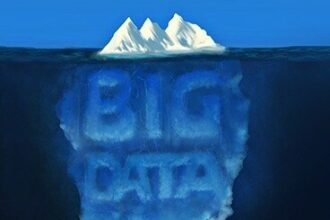 The traditional relational database has been the mainstay of IT for decades. It offered a reliable way to store and search for structured data and an easy way to compare different categories of information. While the relational database works great for slowly growing, structured data, it was not designed to handle the world of multi structured data that we live in today.
The traditional relational database has been the mainstay of IT for decades. It offered a reliable way to store and search for structured data and an easy way to compare different categories of information. While the relational database works great for slowly growing, structured data, it was not designed to handle the world of multi structured data that we live in today.
 The traditional relational database has been the mainstay of IT for decades. It offered a reliable way to store and search for structured data and an easy way to compare different categories of information. While the relational database works great for slowly growing, structured data, it was not designed to handle the world of multi structured data that we live in today.
The traditional relational database has been the mainstay of IT for decades. It offered a reliable way to store and search for structured data and an easy way to compare different categories of information. While the relational database works great for slowly growing, structured data, it was not designed to handle the world of multi structured data that we live in today.
Every day, consumers generate unstructured social media and clickstream data that could offer valuable insights if companies could only access it. In addition, the amount of data is growing so fast, that traditional databases are unable to keep up without costly additions to the data warehouse. Due to these restrictions, companies that rely solely on relational databases instead of taking advantage of Hadoop to access big data are missing out on valuable insights that traditional, structured data won’t tell them.
1. The Consumer’s Individual Interests
Marketers have been segmenting consumer groups by demographics and psychographics for years, so what’s so different about the insights big data can bring? Targeting customer segments gives you some idea of what an individual may be interested in, but what affluent 55-year-old woman is the exact same as every other woman that fits that profile? Enterprise Hadoop, on the other hand, can capture an individual’s interests from what they click on to what they are pinning on Pinterest and talking about on Twitter. That level of information allows marketers to learn not just a group’s motivating factors, but an individual’s interests at the exact moment he or she is talking about it.
2. How Marketing Tactics Affect Sales
There are plenty of ways to measure the success of an entire marketing campaign. Did sales go up or down? There are also ways to measure outreach. How many people liked a Facebook page or participated in a social media contest? These standards of measurement can be useful, but they are also subject to skepticism. Sales can also be affected by competitors, current events and holidays, and outreach doesn’t always result in a sale. Access to big data can yield more accurate data about how a series of tweets directly affected sales of a certain product, allowing marketers to hone and refine their marketing tactics to generate the best results possible.
3. Hidden Security Risks
Whether it’s a financial institution that’s targeted by financial scams or businesses losing data or intellectual property to hackers, every institution faces some kind of security risk. While organizations are aware of the common security risks they face and make efforts to protect against them, what about the risks that are hard to find or the organizations are completely unaware of? These types of risks are often hidden as small inconsistencies within huge amounts of data, amounts too large for a traditional database to handle at scale. Hadoop’s scalability, on the other hand, can easily handle sifting through tons of data to discover hidden security threats.
4. Innovation Insights
Imagine being able to determine which attributes of a product are truly important to the consumer and being able to eliminate other costly features without having to release multiple prototypes. Think about how much faster the medical community would be able to create new drugs or other life saving procedures if they could narrow down the test pool faster and access all of the other research data that had been created on a certain subject. The amount of data that would have to be stored would be much too expensive for a traditional database to handle, but with a Hadoop database, researchers would have access to valuable innovative insights.
5. Churn Predictions
Customers leave for a variety of reasons, but determining the exact turning point is difficult. Big data can help make churn predictions by finding patterns, such as a certain number of service calls or reaching a certain income, to predict when customers may stop buying a product. These predictions could then give insights in how to reduce churn and alter customer service to better reach the needs of the consumer. While the traditional database still has a lot of important functions, it’s inability to handle unstructured data or extreme workloads limits it from offering valuable insights. The Hadoop database is a key stepping stone to accessing those insights that are hidden within the mass of mobile and online data.








